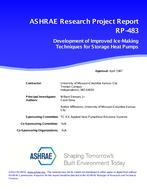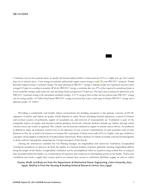Analyses refrigerant circuiting design in two-phase heat exchangers. In particular, studies a new type of compact heat exchanger, the microchannel heat exchanger. In addition to port size and port shape effects, the pressure-drop effect and the cross-flow heat exchanger effect are considered. States that refrigerant circuiting design principles obtained from the single-phase heat exchanger analysis presented in part I are applicable to two-phase heat exchangers. Also found that for a given port diameter, the pressure-drop effect provides an optimum relationship between the number of parallel refrigerant passages and the heat exchanger length; and that the cross-flow heat exchanger effect interacts with the pressure-drop effect, particularly when the condenser face area is constrained. There exists an optimum combination of the number of ports and the number of tubes that minimises condenser volume for a given port diameter.
KEYWORDS: year 1996, refrigerants, fluid flow, compact heat exchangers, heat exchangers, pressure drop, cross flow heat exchangers, condensers, air temperature, heat flow, optimisation, designing, R134a, comparing, calculating
Citation: Symposium, ASHRAE Trans. 1996, Vol.102, Part 2
Product Details
- Published:
- 1996
- File Size:
- 1 file , 1.2 MB
- Product Code(s):
- D-16592


